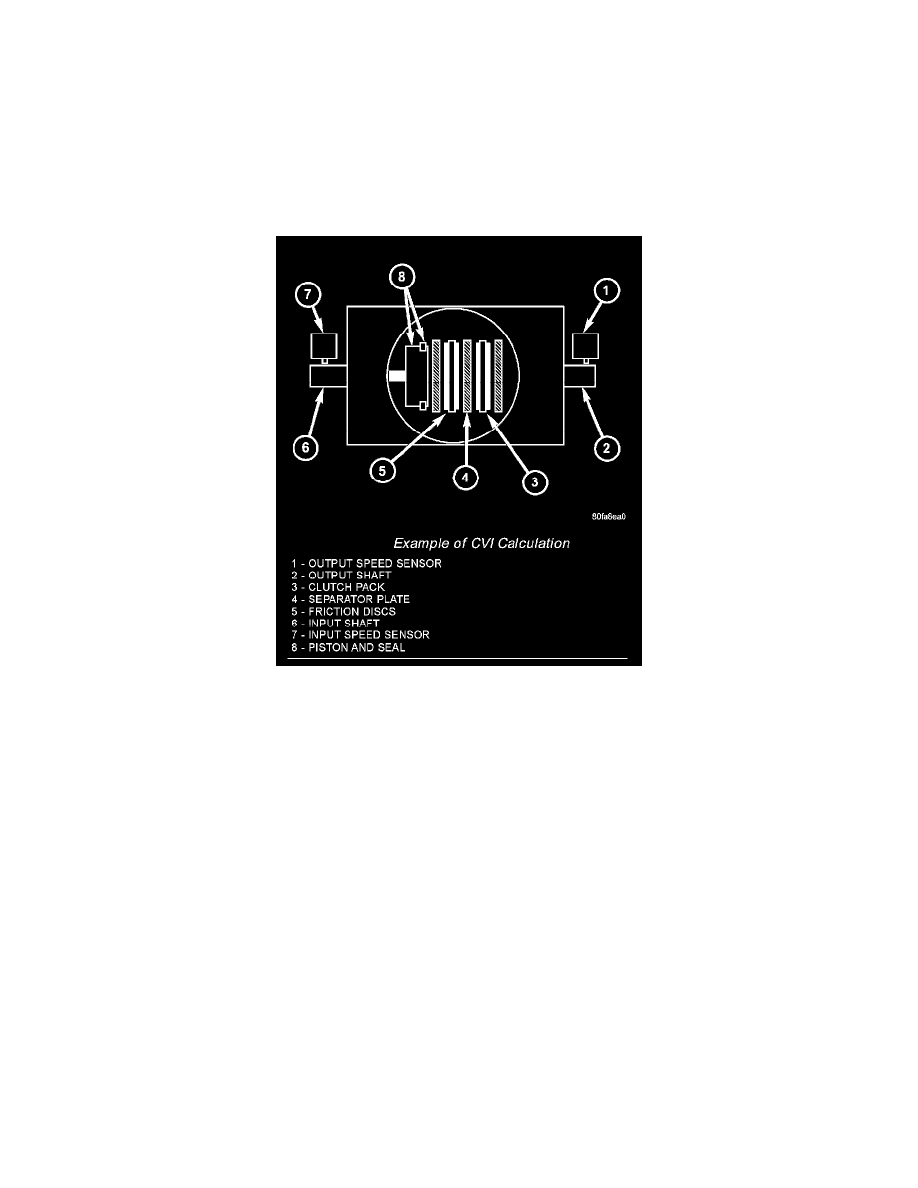Grand Caravan V6-3.3L VIN R (2005)

The PCM contains a voltage converter that changes battery voltage to a regulated 8.0 volts. The 8.0 volts power the camshaft position sensor, crankshaft
position sensor and vehicle speed sensor. The PCM also provides a 5.0 volts supply for the engine coolant temperature sensor, intake air temperature
sensor, manifold absolute pressure sensor and throttle position sensor.
The PCM engine control strategy prevents reduced idle speeds until after the engine operates for 320 km (200 miles). If the PCM is replaced after 320
km (200 miles) of usage, update the mileage in new PCM. Use the DRBIII(R) scan tool to change the mileage in the PCM.
TRANSMISSION CONTROL
CLUTCH VOLUME INDEX (CVI)
Example Of CVI Calculation
An important function of the PCM is to monitor Clutch Volume Index (CVI). CVIs represent the volume of fluid needed to compress a clutch pack.
The PCM monitors gear ratio changes by monitoring the Input and Output Speed Sensors. The Input, or Turbine Speed Sensor sends an electrical signal
to the PCM that represents input shaft rpm. The Output Speed Sensor provides the PCM with output shaft speed information.
By comparing the two inputs, the PCM can determine transaxle gear ratio. This is important to the CVI calculation because the PCM determines CVIs by
monitoring how long it takes for a gear change to occur.
Gear ratios can be determined by using the DRB Scan Tool and reading the Input/Output Speed Sensor values in the "Monitors" display. Gear ratio can
be obtained by dividing the Input Speed Sensor value by the Output Speed Sensor value.
For example, if the input shaft is rotating at 1000 rpm and the output shaft is rotating at 500 rpm, then the PCM can determine that the gear ratio is 2:1.
In direct drive (3rd gear), the gear ratio changes to 1:1. The gear ratio changes as clutches are applied and released. By monitoring the length of time it
takes for the gear ratio to change following a shift request, the PCM can determine the volume of fluid used to apply or release a friction element.
